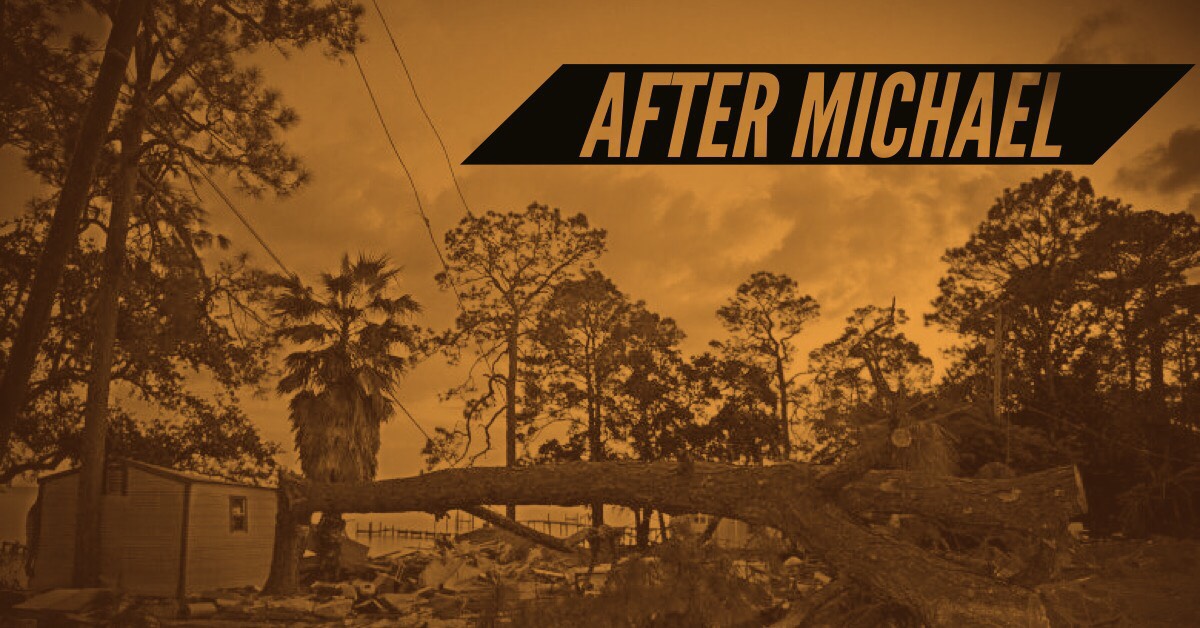
The entire state is focused appropriately on hurricane recovery, relief, and repair efforts. But with less than three weeks before Election Day, what does this mean for the hundreds of thousands of people in the affected regions?
Gov. Rick Scott, Mayor Andrew Gillum, CFO Jimmy Patronis, and many other elected officials have been actively working on recovery efforts in the state, and while many of them have (at least temporarily) suspended their campaigns, a big question that remains unanswered is whether Hurricane Michael will disenfranchise voters in the Florida Panhandle.
Secretary of State Ken Detzner — the state’s go-to official on elections issues — said this week that he is waiting to hear from local supervisors of elections before making proposed changes, but in some of the areas that were hit the hardest — like Bay County — many of the buildings and facilities used for precincts are either damaged or being used for emergency shelters.
According to the News Service of Florida, Okaloosa County Supervisor of Elections Paul Lux is asking the state to consider potential creative solutions like email vote-by-mail ballots or combining precincts. While those determinations will ultimately be made after careful consideration by various state and local officials, some data casts light on the upcoming elections.
In the 11 counties FEMA has designated as needing Individual Assistance (as opposed to just Public Assistance), there are more than 270,000 registered voters. Looking solely at party registration numbers, these voters are fairly “purple” — 43 percent Republican, 40 percent Democrat, and 17 percent registered with minor parties or no party at all.
Voters in these 11 counties typically have a higher turnout than the rest of the state, and a higher frequency of voting on Election Day rather than via mail or early voting. In 2016, 39 percent of voters who cast a ballot in these counties did so on Election Day, compared with 35 percent of voters in all other Florida counties. Another 41 percent voted early, compared with 40 percent elsewhere. This is important because nearly half of a million Floridians have already cast ballots — approximately 4 percent of voters statewide, but just 1 percent of voters in the counties hit hardest by Michael.
These differences may seem slim, but they represent tens of thousands of people, and in a state that is routinely decided by razor-thin margins, those votes can make a big difference. For example, in 2014, Scott beat Charlie Crist by just over 64,000 votes. In these 11 most impacted counties, Scott’s margin over Crist was 39,467 — equivalent to 62 percent of Scott’s entire margin.
Regardless of your political preferences, a devastating hurricane shouldn’t hinder a voter’s ability to cast a ballot in any election. That’s especially true for the countless people whose homes are damaged or those who have been forced to relocate outside of their community, at least for now.
There’s only a few weeks to go, and while many areas like Mexico Beach and Panama City may not be the same for a long time, one thing is clear: The ability to exercise one’s constitutional right on Election Day should not be among Hurricane Michael’s extraordinary losses.
___
Karen Halperin Cyphers, Ph.D., is a partner and vice president of research with Sachs Media Group in Tallahassee.



